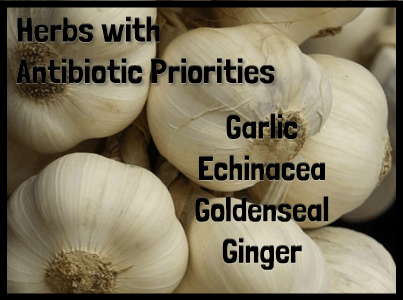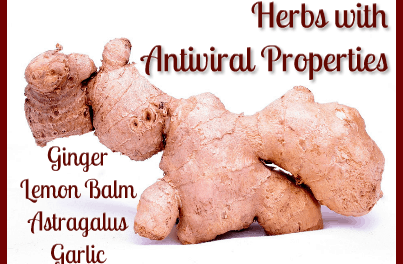Antibiotics and antibiotic-resistant bacteria have understandably garnered much attention lately. One cause for the increasing concern is that due to extensive and some think excessive antibiotic use, bacteria have developed a resistance to known antibiotics, so creating “super-bugs,” or antibiotic-resistant bacteria. Bacterial infections that used to be fairly easily defeated by antibiotics are now much more serious, and sometimes even deadly.
However, plants and herbs with antibiotic properties seem to elude the adaptation abilities of bacteria and so don’t seem to lead to the appearance of antibiotic-resistant bacteria. This has caused ever increasing interest in and research on herbs.
Antibiotic herbs have always been used in the home for minor infections and as antiseptics to prevent infection, and research continues to prove their efficacy.
Here is a list of some of the more popular useful antibiotic herbs.
1. Garlic
This smelly but effective herb is an antibiotic powerhouse. It’s also widely available and inexpensive, as garlic is a common ingredient in popular recipes. You can even grow it yourself, and many people do.
How do you use it?
Garlic works best when taken internally. It can also be made into ear drops and used externally to combat ear infections. It makes a healing broth when simmered in broth or water, and works especially well for upper respiratory infections. Garlic may be minced and added to all sorts of foods, from pasta to salad. But many natural health practitioners believe that garlic is most effective when used raw – as juice, minced, or crushed. For people who can’t tolerate the taste of garlic, garlic oil can be encapsulated and taken like vitamins.
2. Echinacea
You’ve probably heard of this herb – it is popular during cold and flu season, and for good reason. Echinacea is a powerful antibiotic herb (actually a decorative flower) and, in the case of colds and flu, fairly anti-viral. Tinctures made with it also work as an antiseptic on wounds and to treat sore throats.
How do you use it?
Tea made from Echinacea’s roots and aerial parts is not particularly tasty, but it is drinkable. Mixed with teas from sweeter plants, such as raspberry or elderberry, it can even be tasty. Such a tea can also be used as a wash for superficial cuts and scrapes. Echinacea tincture, diluted in warm water, makes a very good sore throat remedy.
3. Goldenseal
The golden yellow color of Goldenseal’s roots give it its name, and these roots are the parts that are used medicinally. Goldenseal works well topically and internally; however, it is such an effective antibiotic that it can affect intestinal flora, and should not be taken internally for more than a few weeks at a time.
How do you use it?
Infused in boiling water and then cooled, Goldenseal has a reputation as a very effective eye wash for infections in and around the eye. Such an infusion also makes a very good wash for cuts and scrapes, and can even be used on surgical wounds, particularly on pets. If you use it internally, following up the treatment with a probiotic to repopulate the intestinal biome is a good idea.
4. Ginger
Did you know that ginger can work as an antibiotic? It is reputed to be effective against E. coli and Salmonella, both of which are food-borne bacteria that can cause significant illness in people. Ginger has also been used to treat and cure ulcers.
How do you use it?
Ginger can be made into a tea using the fresh root or the dried and ground root. The fresh root is inexpensive, and a decoction can easily be made by gently simmering ginger slices in water and drinking the result, sweetened with raw honey. You can also eat candied ginger to help treat ulcers and fight infection.



Recent Comments